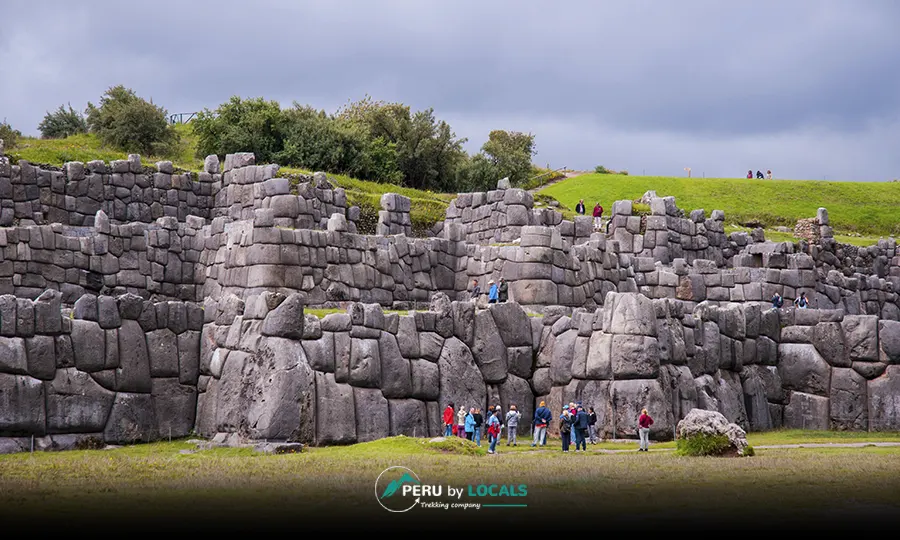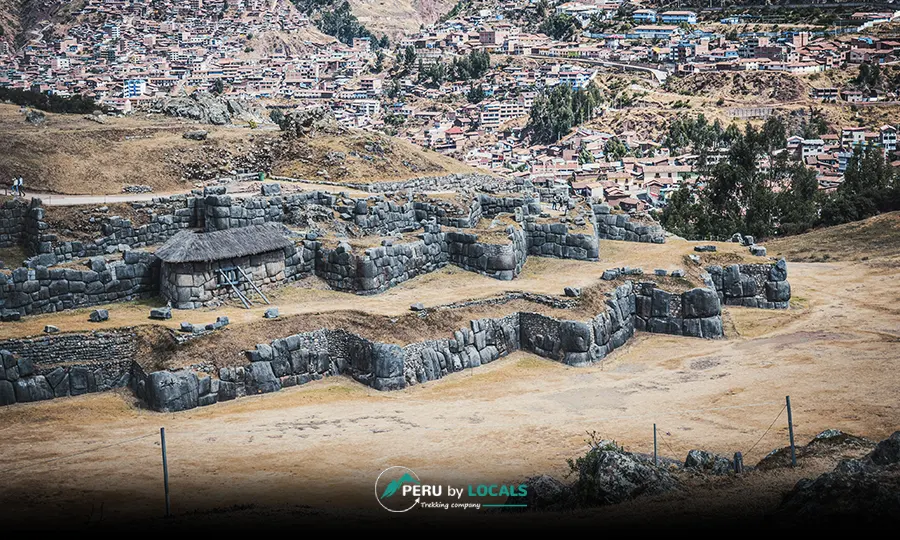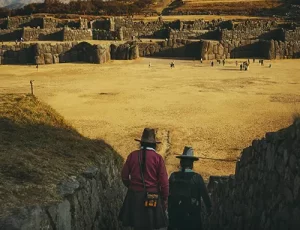Sacsayhuamán: The Inca Fortress of Cusco, Peru

Sacsayhuamán
Sacsayhuamán is one of the most iconic and fascinating archaeological sites in Peru. Perched on a hilltop 755 feet (230 meters) above the city of Cusco, this ancient Inca fortress offers a stunning panoramic view of the surrounding area and is a must-see on any City Tour in Cusco. Built during the 15th century, Sacsayhuamán remains a testament to the advanced engineering skills of the Incas. In this article, we will delve into its history, architecture, purpose, and the role it plays in modern Peru.
Introduction to Sacsayhuamán
Sacsayhuamán is a massive fortress that stands as a symbol of the Inca Empire’s power and ingenuity. The fortress was built under the reign of Pachacuti Inca Yupanqui, one of the most powerful and visionary rulers of the Inca civilization. The site is strategically located on a hill that overlooks the city of Cusco, which itself was designed by the Incas to resemble a puma. Sacsayhuamán represents the puma’s head, a symbol of power and strength in Inca culture.
The Architectural Marvel of Sacsayhuamán
One of the most remarkable features of Sacsayhuamán is its massive stone walls. These walls were constructed with stones that are up to 27 feet (8.2 meters) tall and weigh several tons. The precision with which the stones were cut and placed is unmatched. The walls are built without mortar, and the stones fit together so tightly that even after centuries of earthquakes and natural disasters, the walls have remained intact. In fact, the fortress is famous for withstanding tremors that have destroyed more modern buildings in the region.
The Construction Techniques of Sacsayhuamán
The construction of Sacsayhuamán remains a mystery to archaeologists. The Incas, who lacked advanced tools like the wheel, managed to move and carve these giant stones using only simple methods. It is believed that the stones were transported from quarries located as far as 32 kilometers away. Workers used logs and ropes to drag the stones into place, with up to 20,000 people reportedly involved in the construction process. The result is a fortress with walls that are over 1,000 feet (305 meters) long, showcasing the Inca’s advanced understanding of engineering.
The Purpose of Sacsayhuamán

Purpose of Sacsayhuamán
While the exact purpose of Sacsayhuamán is still debated, it is clear that the fortress served multiple functions. The site’s walls and towers are clearly defensive, designed to protect Cusco from external threats. In addition to its military role, Sacsayhuamán also appears to have had a ceremonial function. Archaeologists have uncovered a large plaza surrounded by terraces, which may have been used for religious and cultural ceremonies. Furthermore, the discovery of pre-Inca temples and roadways at the site’s periphery suggests that Sacsayhuamán may have had a spiritual significance as well.
The Battle of Sacsayhuamán
Sacsayhuamán is also known for the bloody battle that took place in 1536, during the Spanish conquest of Peru. The fortress was the site of a fierce clash between the Inca forces, led by Manco Inca Yupanqui, and the Spanish conquistadors. Despite their best efforts, the Incas were ultimately defeated by the Spanish forces. The walls of Sacsayhuamán were partially dismantled by the Spanish, who used the stones to construct buildings in colonial Cusco. However, the grandeur of the site is still evident today.
Rediscovery of Sacsayhuamán
After the Spanish conquest, Sacsayhuamán was abandoned and covered over. It wasn’t until 1934 that Peruvian archaeologists rediscovered the site. Since then, extensive excavations have revealed much about the fortress’s construction, purpose, and significance. The ongoing research continues to shed light on the mysteries surrounding Sacsayhuamán and its role in Inca civilization.
Key Features of Sacsayhuamán
Exploring Sacsayhuamán offers visitors a glimpse into the ingenuity of Inca architecture. Here are some of the key features of the site:
1. The Massive Walls and Terraces
The most impressive feature of Sacsayhuamán is its walls, which are made of enormous stones that fit perfectly together. These walls are arranged in a zigzag pattern, resembling the shape of lightning bolts. The design is not only beautiful but also functional, as the shape provides stability against earthquakes. The terraces surrounding the fortress are also noteworthy, offering visitors a unique view of Cusco and the surrounding Andes.
2. The Three Towers
At the top of Sacsayhuamán are three towers that were strategically placed for defensive purposes. These towers are interconnected by underground tunnels, allowing for easy communication and movement within the fortress. The most famous of these towers is Muyuccmarca, which is associated with the Inca general Cahuide, who famously jumped to his death from the tower during the Spanish siege of Cusco in 1536.
3. The Inca Throne
Located near the fortress, the “Trono del Inca” (Inca Throne) is a stone seat carved into the shape of a chair. This seat is believed to have been used by the Inca for ceremonies and important gatherings. The location of the throne is significant, as it aligns with the sun’s rays during the winter solstice, highlighting the Inca’s advanced knowledge of astronomy.
4. The Chincanas (Tunnels)
Sacsayhuamán is also home to several underground tunnels known as Chincanas. These tunnels are believed to have been used for ceremonial purposes or as escape routes during times of conflict. Visitors can explore the smaller Chincana, but the larger one remains off-limits due to safety concerns. The tunnels add an element of mystery to the fortress, and many legends surround their origin and purpose.
Visiting Sacsayhuamán
Today, Sacsayhuamán is one of Cusco’s most popular tourist attractions. It is included in the Cusco Tourist Ticket, which provides access to several key archaeological sites in the region. The fortress is also the site of the annual Inti Raymi festival, a celebration of the Inca sun god, which takes place every year on June 24. The festival includes dramatic reenactments of Inca ceremonies and is a must-see for anyone visiting Cusco during that time.
When is the Best Time to Visit Sacsayhuamán?
The best time to visit Sacsayhuamán is during the dry season, which runs from April to November. The weather during this time is typically sunny and clear, making it perfect for exploring the site and taking photographs. However, if you prefer a quieter experience, the rainy season from December to March offers fewer tourists and a different perspective on the landscape.
Conclusion
Sacsayhuamán is not only an architectural wonder but also a testament to the ingenuity and resilience of the Inca civilization. The fortress’s massive walls, impressive design, and historical significance make it a must-see for anyone traveling to Cusco. Whether you are interested in Inca history, architecture, or simply want to enjoy the breathtaking views, Sacsayhuamán is a place that will leave you in awe.
Ready to explore Sacsayhuamán and other wonders of Cusco? Peru by Locals offers guided tours to Sacsayhuamán and other historical sites in the region. Book your tour today and embark on a journey through the heart of Inca history!

Contacta con nuestro especialista en viajes Jose Condor
"Con mi experiencia y pasión por el turismo, te guiaré a descubrir los atractivos únicos de Cusco, ayudándote a planificar unas vacaciones inolvidables llenas de historia y aventura"
Llámame: +51 989 585 967
Descubra su Aventura Peruana perfecta con la Ayuda de Nuestros Expertos Locales. ¡Contáctenos Hoy!
THANK YOU!
You're one step closer to the trip of a lifetime.
Now that we've received your request, one of our expert Travel Advisors will contact you. Within 1 business day, you'll be able to start customizing your itinerary.
If you have any questions, call us or message us on WhatsApp at: +51 989 585 967
In the case that you don't receive a confirmation email, please check your spam folder.

How can we help you?












